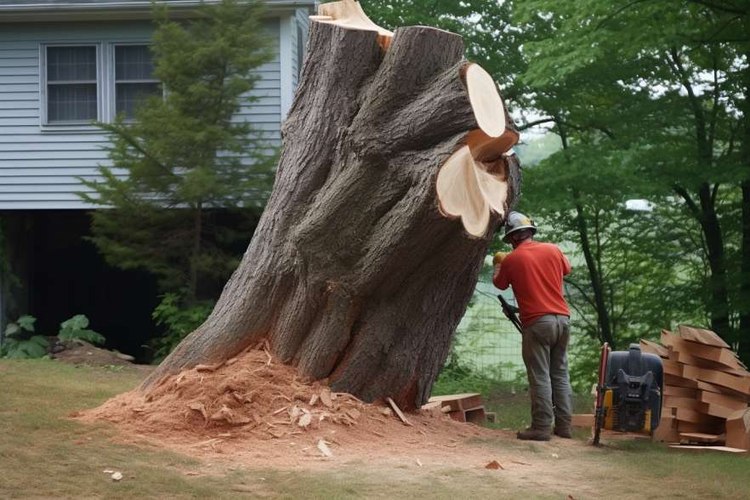Comprehensive Guide to Tree Removal Services: What Every Property Owner Should Know
Tree removal is often a necessary part of property maintenance, whether due to disease, safety concerns, or landscape redesign. Understanding the process, costs, and considerations involved can help property owners make informed decisions when faced with this sometimes complex task. Professional tree services offer expertise, equipment, and safety measures that can transform a potentially dangerous job into a controlled, efficient operation.

Factors that Influence Tree Removal Costs
The price of tree removal varies considerably based on several key factors. Tree size is perhaps the most significant determinant, with larger trees requiring more time, equipment, and crew members to remove safely. The location of the tree also plays a crucial role—trees near structures, power lines, or in areas with limited access typically cost more to remove due to the additional precautions required.
Tree condition affects pricing as well. Dead, diseased, or structurally unstable trees present unique challenges and safety concerns that may increase costs. The species of the tree matters too, as hardwoods like oak and maple are denser and more difficult to cut than softer woods like pine or cedar.
Additional services such as stump grinding, wood chipping, or hauling away debris will add to the final bill. Many companies offer these services as add-ons rather than including them in the base price, so it’s important to clarify what’s included when getting quotes.
How Professional Tree Services Ensure Safe Tree Removal
Professional arborists approach tree removal with careful planning and risk assessment. Before any cutting begins, they evaluate the tree’s lean, structure, and surrounding environment to determine the safest removal method. They identify potential hazards such as power lines, nearby structures, or weak branches that could pose dangers during the removal process.
Equipment plays a vital role in safety. Professional services use specialized tools including harnesses, ropes, cranes, bucket trucks, and rigging systems that allow for controlled dismantling of trees in sections. This methodical approach prevents the unpredictable falls that often cause property damage during DIY attempts.
Training and certification are perhaps the most important safety factors. Legitimate tree service providers employ crews trained in proper cutting techniques, equipment operation, and emergency procedures. Many are certified by organizations like the International Society of Arboriculture (ISA), which establishes industry standards for safe practices.
Common Methods Used in Tree Removal and Their Advantages
The straight felling method involves cutting the tree at the base to fall in one piece in a predetermined direction. This technique is typically used in open areas where there’s ample room for the tree to fall without damaging property. Its main advantages are speed and cost-effectiveness when conditions permit its safe use.
Sectional dismantling involves removing the tree in smaller pieces, working from top to bottom. Arborists cut branches and sections of trunk, carefully lowering them to the ground using ropes and rigging. This precision method is ideal for trees in confined spaces or near structures where controlled removal is essential.
Crane-assisted removal becomes necessary for extremely large trees or those in difficult locations. The crane supports sections of the tree as they’re cut, then lifts them away from the property. While more expensive, this method offers unparalleled safety and efficiency for complex removals.
Signs That Indicate When Tree Removal is Necessary
Structural problems often signal the need for removal. Multiple trunks with weak attachment points, large dead branches, or visible cracks in the trunk create hazardous conditions. Leaning trees, particularly those that have recently changed position, present immediate danger and warrant professional assessment.
Disease and infestation can sometimes be treated, but advanced cases may necessitate removal. Signs include abnormal leaf drop, discolored foliage, fungal growth on the trunk, carpenter ant activity, or woodpecker damage that indicates internal decay. When more than 50% of a tree is affected, removal is often the best option.
Root damage isn’t always visible but can severely compromise tree stability. Construction activity, soil compaction, or newly exposed roots can all indicate potential problems. Additionally, trees growing too close to foundations, underground utilities, or other structures may need removal to prevent property damage.
Tips for Choosing a Reliable Tree Removal Service
Proper credentials should be your first consideration when selecting a tree service. Look for companies with certified arborists on staff, proper business licensing, and adequate insurance coverage—including both liability and workers’ compensation. Request certificates of insurance and verify them with the insurance provider before work begins.
Experience matters significantly in this field. Ask potential providers about their history with similar trees and situations to yours. Reputable companies will be able to provide references from past clients with comparable projects and may even have portfolios of completed work.
A detailed written estimate is essential for avoiding disputes. The proposal should specify exactly what services are included, how debris will be handled, whether stump removal is included, and the timeline for completion. Be wary of companies that only provide verbal quotes or demand full payment upfront.
| Service Provider | Basic Tree Removal | Includes Stump Removal | Emergency Services | Additional Features |
|---|---|---|---|---|
| Professional Arborist Companies | $400-$1,200 | Usually extra ($100-$400) | Yes (higher rates) | Tree health assessments, pruning services |
| General Tree Services | $300-$1,000 | Sometimes included | Usually | Multiple tree discounts |
| Landscaping Companies | $350-$900 | Rarely included | Limited | Package deals with other landscaping |
| Independent Operators | $250-$800 | Negotiable | Varies | Often more flexible scheduling |
Prices, rates, or cost estimates mentioned in this article are based on the latest available information but may change over time. Independent research is advised before making financial decisions.
Choosing the right tree removal service involves balancing cost considerations with safety needs and service quality. While DIY removal might seem appealing from a cost perspective, the safety risks and potential for property damage make professional services the wisest choice for most situations. By understanding the factors that affect pricing and service quality, property owners can make informed decisions that protect both their property and their budget when tree removal becomes necessary.




